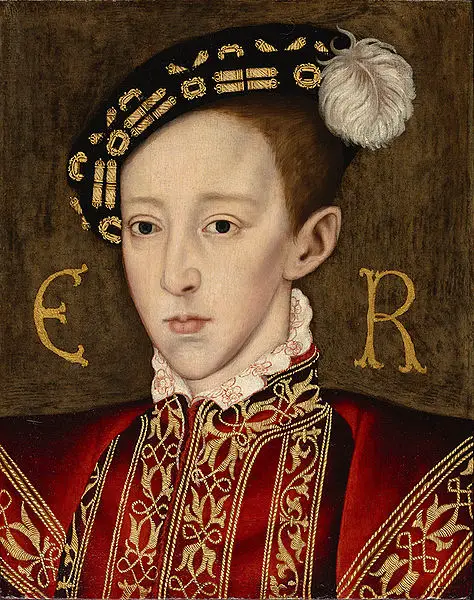In today's Claire Chats, Claire considers the primary source evidence for Thomas Seymour's behaviour with Elizabeth, the future Elizabeth I, between 1547 and 1549.
Primary Sources
You can read the confessions and statements of John Harington, Thomas Parry, Katherine Ashley and Elizabeth herself in A Collection of State Papers relating to Affairs In the Reigns of King Henry VIII, King Edward VI, Queen Mary and Queen Elizabeth From the year 1542 to 1570 edited by Samuel Haynes at https://archive.org/stream/bub_gb_YitDAAAAcAAJ#page/n107/mode/2up from page 93 to 103.
Thomas Seymour's proposal to Elizabeth I and her reply are in Historia Overo Vita Di Elisabetta, Regina D'Inghilterra, Detta Per Sopranome la Comediante Politica by Gregorio Leti, although in Italian! See p. 169-172 at https://archive.org/stream/bub_gb_PIB4-zCWWJQC#page/n343/mode/2up.
Thomas Seymour's proposal to Mary is mentioned in 'Spain: February 1549', in a letter from Van der Delft to the Emperor in Calendar of State Papers, Spain, Volume 9, 1547-1549, ed. Martin A S Hume and Royall Tyler (London, 1912), pp. 335-347 - http://www.british-history.ac.uk/cal-state-papers/spain/vol9/pp335-347.
Other Sources and Further Reading
- Furdell, Elizabeth Lane (2001) The Royal Doctors, 1485-1714: Medical Personnel at the Tudor and Stuart Courts, Boydell & Brewer.
- Norton, Elizabeth (2015) The Temptation Of Elizabeth Tudor, Head of Zeus.
- Haynes, Alan (1999) Sex in Elizabethan England, Sutton Publishing Ltd.
- Perry, Maria (1999) The Word of a Prince: A Life of Elizabeth I from Contemporary Documents, Boydell & Brewer.
- ed. Marcus, Leah (2000) Elizabeth I: Collected Works, University of Chicago Press.



In a few words – what a 🐖 He was!
It’s so nice to be able to use the links again 😉
I agree-he was a user of women and saw them only as a means to an end. But now that I’ve said that, I realize that’s how women were looked upon during those times anyway, whether it was as a vessel to carry an heir, provider of property and wealth, or to gain power. In his case, he was looking for the latter two. Definitely, a predator.
I’m so glad you got back in!
I am not so certain as the only real evidence are these confessions. Elizabeth’s servants are hauled before the great men of the council, there are visits to the home by powerful men, with the power to investigate and a free hand, possibly even a warrant to use special measures. Elizabeth herself said nothing about being abused. The servants alone gave testimony that she was. Somebody was lying. Somebody was exaggerating.
Ashley and Parry may have been told, agree to say the Admiral was after Elizabeth and all will go well, so they invented stories. Alternatively, they may have heard or seen something and told the truth, but added more as they felt afraid unless they painted as bad a picture as possible.
Elizabeth wasn’t a child, so this is not child abuse as she was over fourteen and at an age to marry and have sex. It was still inappropriate behaviour for a few reasons, if it is true.
Thomas Seymour was married to Elizabeth’s stepmother and would be committing adultery.
Elizabeth was a Princess of royal blood, albeit illegitimate, as the law stood, so therefore she was state property. She couldn’t marry without the consent of King and council. Making any advances to her was treason as well as abuse, especially if she didn’t consent.
Seymour was not of sufficient rank to marry Elizabeth, even if she did consent.
Elizabeth was under his protection and so he should show her more respect as a young woman and a member of his household.
This was clearly not behaviour that Elizabeth encouraged and coming into her room was an abuse of power and his position as her guardian. He was much older than her and this behaviour would only be accepted if they were married.
Elizabeth was not a common wh*re and his advances were not appropriate to her as a young woman or as a lady of quality. Rape and assault were still prosecuted even in Tudor times. Seymour could easily over power her and he had no right to touch her or harass her in any way. If he was doing so, yes, he was a sexual predictor.
Tom Seymour made offers of marriage to Elizabeth and to Mary and may have even offered to others of royal blood. He was ambitious and it was his undoing. He married Katherine Parr without permission. Elizabeth came to live in their household as a daughter. Elizabeth was wise to tell him she would only consider his proposal if the council consented or the King commanded. She couldn’t marry without it anyway, because of her status and her father’s will. She would lose out financially and on the succession. The same conditions were binding on Mary as well.
Some parts of the testimony rings true, but things like Katherine Parr and Tom Seymour and Kat Ashley grabbing her and cutting her dress up in the gardens sound like fabrications in order to escape prosecution for not reporting this sooner or allowing it to happen. After all, they were meant to watch over her and if Seymour was allowed in her room alone, where were they? Somebody should have slept in the room with Elizabeth. Somebody should have screamed if they witnessed anything. I am not saying something inappropriate didn’t happen, it probably did, just everything reported cannot be confirmed. There is no other evidence. The fact he was prepared to marry her and had his eye on a royal bride, perhaps makes him of a predatory nature.
It doesn’t matter if Elizabeth had a crush on Thomas Seymour or not. He was 38 years old and she was 13 when it started. She was naturally naive and not experienced in relationships with the opposite sex, even if she was intelligent and book smart. He knew what he was doing. He was therefore a predator (some would call him a pervert).
Whether it was the 16th or the 21st century- he would always be a predator. It’s just that in those times, that behavior would not have been recognized nor punished. I believe it was because children and teens were viewed as “little adults”, and thus partly responsible.